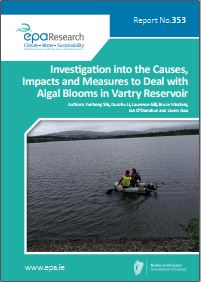Research 353: Investigation into the Causes, Impacts and Measures to Deal with Algal Blooms in Vartry Reservoir
Authors: Yunhong Shi, Dunzhu Li, Laurence Gill, Bruce Misstear, Ian O’Donohue and Liwen Xiao
Summary: Vartry Reservoir is a very important drinking water source in Ireland. This project collected and analysed historical water quality and ecology data from 2016 to 2018 and a series of laboratory experiments were carried out to investigate the causes of diatom blooms to identify the pressures. The study also monitored nutrient levels in both the feeding rivers and the reservoir.

Water quality :: Environmental Protection Agency, Ireland
https://www.epa.ie/media/epa-2020/publications/research/Thumbnail_353.jpg